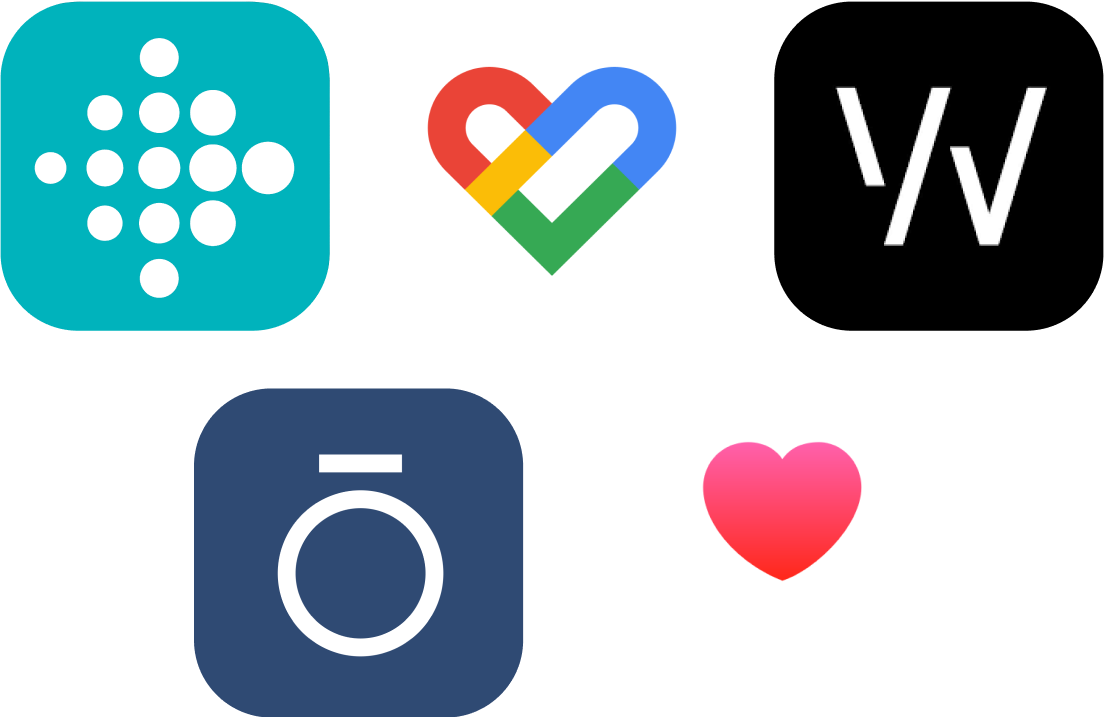Health & Wellness
Sauna and Cold Plunge Routine: Unlock Health, Recovery, and Longevity
5 min read


Download Awesome Health Club App to track, manage, and optimize your intermittent fasting routine!


Gender, Age, Weight, Height, Activity Level, and type of fasting
Intermittent fasting (IF) has gained popularity in recent years for its numerous health benefits. It’s a game-changer for those aiming to lose weight. However, there are so many IF methods that it can get confusing when and how much to eat for each meal.
Our health and weight loss journies are personal endeavours, and no two paths are the same. That's why we developed an Intermittent Fasting Calculator that isn't just about numbers; it's about you, your unique characteristics, and your chosen approach to intermittent fasting.
Using your inputs, this Intermittent Fasting Calculator computes your calorie requirements and Total Daily Energy Expenditure (TDEE) to make the best recommendations.
Once you add your inputs and select a fasting duration, the calculator dynamically adjusts your recommended calorie intake and generates your eating window. This is the period during which you can consume your meals and snacks.
Whether you're an early bird or a night owl, intermittent fasting can be adapted to fit your lifestyle. You can experiment with different start times and fasting durations, on this intermittent fasting weight loss calculator, to find what works best for you.
We also have a sugar intake calculator that helps you find out exactly how much sugar you can safely have every day.


Intermittent fasting (IF) is a dietary pattern that alternates between periods of eating and fasting. The goal is to create a time-restricted eating window for consuming your meals. During the fasting period, you have to abstain from food.
While traditional diets focus on what to eat, intermittent fasting focuses on when to eat. By restricting the time window for eating, this dietary strategy enables your body to use stored fat as a source of energy.
When you fast for an extended time, for 16, 18, 20 hours, or more, your insulin levels drop, and your body turns to burning stored fat for energy.
During the fasting periods, do not have anything that will trigger an insulin release. It's best to stick to zero-calorie beverages such as water, black coffee, and herbal tea. Do not add any milk, sugar, or other additives to your drinks. You can also add lemon juice or ACV to your drinks.
Yes, intermittent fasting is good for weight loss as it promotes calorie restriction and fat burning. Having a fixed eating window helps reduce your calorie intake. Training yourself to eat in this window helps you develop discipline and build willpower. This helps deal with food cravings and breaking of unhealthy food habits that may have contributed to the unwanted weight gain.
For sustained weight loss, such lifestyle changes will be needed. As long as you make mindful and healthy choices during your eating window, IF is effective in boosting weight loss. However, individual results may vary.


Intermittent fasting offers numerous health benefits such as:


If you are new to fasting, you may find it difficult to manage your hunger during the fasting period. Here are some beginner tips for first-timers, to help you deal with those hunger pangs and wait till your eating window begins:


Intermittent fasting is an eating pattern that focuses on when you eat. It offers many health benefits including weight loss and improved insulin sensitivity. There are different types of intermittent fasting methods such as 16/8, OMAD, etc.
You should choose a fasting method that fits your lifestyle. However, it s better to start with shorter fasting periods and allow your body to adapt gradually Eat nutrient dense foods during your eating window and stay well hydrated. You can have zero calorie beverages during fasting periods.
Our free intermittent fasting calculator can make this journey much easier for you by simplifying the meal timings and calorie intake, to help you reach your fitness goals. If you have underlying health conditions, it s advisable to consult a healthcare professional before starting IF.
Horem ipsum dolor sit amet, consectetur adipiscing elit. Etiam eu turpis molestie, dictum est a, mattis tellus. Sed dignissim, metus nec fringilla accumsan, risus sem sollicitudin lacus, ut interdum tellus elit sed risus. Maecenas eget condimentum velit, sit amet feugiat lectus. Class aptent taciti sociosqu ad litora torquent per conubia nostra, per inceptos himenaeos. Praesent auctor purus luctus enim egestas, ac scelerisque ante pulvinar. Donec ut rhoncus ex. Suspendisse ac rhoncus nisl, eu tempor urna. Curabitur vel bibendum lorem. Morbi convallis convallis diam sit amet lacinia. Aliquam in elementum tellus.
Horem ipsum dolor sit amet, consectetur adipiscing elit. Etiam eu turpis molestie, dictum est a, mattis tellus. Sed dignissim, metus nec fringilla accumsan, risus sem sollicitudin lacus, ut interdum tellus elit sed risus. Maecenas eget condimentum velit, sit amet feugiat lectus. Class aptent taciti sociosqu ad litora torquent per conubia nostra, per inceptos himenaeos. Praesent auctor purus luctus enim egestas, ac scelerisque ante pulvinar. Donec ut rhoncus ex. Suspendisse ac rhoncus nisl, eu tempor urna. Curabitur vel bibendum lorem. Morbi convallis convallis diam sit amet lacinia. Aliquam in elementum tellus.
Horem ipsum dolor sit amet, consectetur adipiscing elit. Etiam eu turpis molestie, dictum est a, mattis tellus. Sed dignissim, metus nec fringilla accumsan, risus sem sollicitudin lacus, ut interdum tellus elit sed risus. Maecenas eget condimentum velit, sit amet feugiat lectus. Class aptent taciti sociosqu ad litora torquent per conubia nostra, per inceptos himenaeos. Praesent auctor purus luctus enim egestas, ac scelerisque ante pulvinar. Donec ut rhoncus ex. Suspendisse ac rhoncus nisl, eu tempor urna. Curabitur vel bibendum lorem. Morbi convallis convallis diam sit amet lacinia. Aliquam in elementum tellus.
Horem ipsum dolor sit amet, consectetur adipiscing elit. Etiam eu turpis molestie, dictum est a, mattis tellus. Sed dignissim, metus nec fringilla accumsan, risus sem sollicitudin lacus, ut interdum tellus elit sed risus. Maecenas eget condimentum velit, sit amet feugiat lectus. Class aptent taciti sociosqu ad litora torquent per conubia nostra, per inceptos himenaeos. Praesent auctor purus luctus enim egestas, ac scelerisque ante pulvinar. Donec ut rhoncus ex. Suspendisse ac rhoncus nisl, eu tempor urna. Curabitur vel bibendum lorem. Morbi convallis convallis diam sit amet lacinia. Aliquam in elementum tellus.
Horem ipsum dolor sit amet, consectetur adipiscing elit. Etiam eu turpis molestie, dictum est a, mattis tellus. Sed dignissim, metus nec fringilla accumsan, risus sem sollicitudin lacus, ut interdum tellus elit sed risus. Maecenas eget condimentum velit, sit amet feugiat lectus. Class aptent taciti sociosqu ad litora torquent per conubia nostra, per inceptos himenaeos. Praesent auctor purus luctus enim egestas, ac scelerisque ante pulvinar. Donec ut rhoncus ex. Suspendisse ac rhoncus nisl, eu tempor urna. Curabitur vel bibendum lorem. Morbi convallis convallis diam sit amet lacinia. Aliquam in elementum tellus.
Horem ipsum dolor sit amet, consectetur adipiscing elit. Etiam eu turpis molestie, dictum est a, mattis tellus. Sed dignissim, metus nec fringilla accumsan, risus sem sollicitudin lacus, ut interdum tellus elit sed risus. Maecenas eget condimentum velit, sit amet feugiat lectus. Class aptent taciti sociosqu ad litora torquent per conubia nostra, per inceptos himenaeos. Praesent auctor purus luctus enim egestas, ac scelerisque ante pulvinar. Donec ut rhoncus ex. Suspendisse ac rhoncus nisl, eu tempor urna. Curabitur vel bibendum lorem. Morbi convallis convallis diam sit amet lacinia. Aliquam in elementum tellus.
Horem ipsum dolor sit amet, consectetur adipiscing elit. Etiam eu turpis molestie, dictum est a, mattis tellus. Sed dignissim, metus nec fringilla accumsan, risus sem sollicitudin lacus, ut interdum tellus elit sed risus. Maecenas eget condimentum velit, sit amet feugiat lectus. Class aptent taciti sociosqu ad litora torquent per conubia nostra, per inceptos himenaeos. Praesent auctor purus luctus enim egestas, ac scelerisque ante pulvinar. Donec ut rhoncus ex. Suspendisse ac rhoncus nisl, eu tempor urna. Curabitur vel bibendum lorem. Morbi convallis convallis diam sit amet lacinia. Aliquam in elementum tellus.